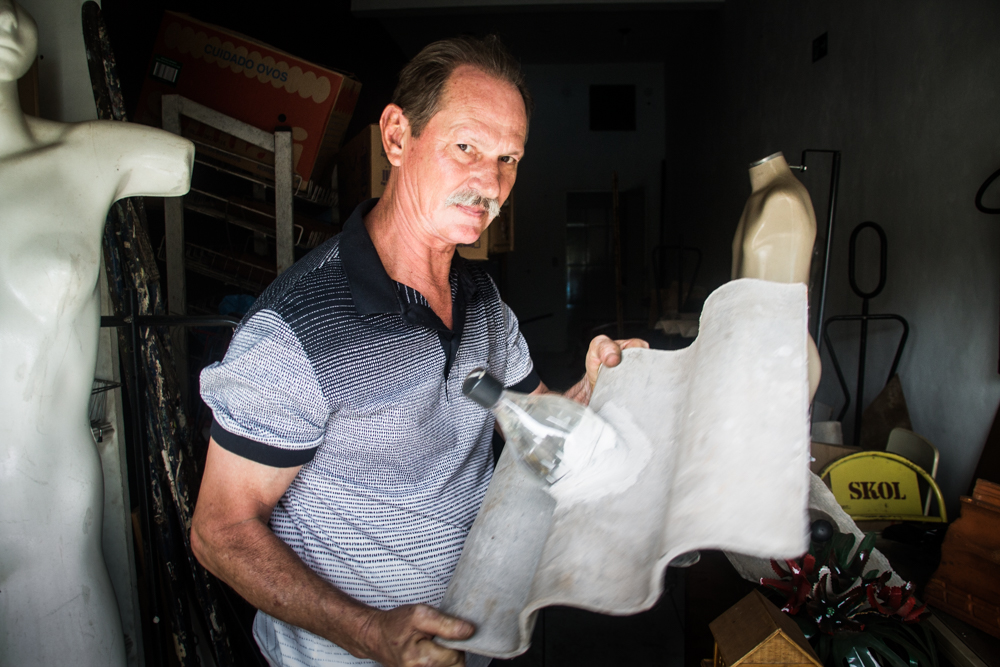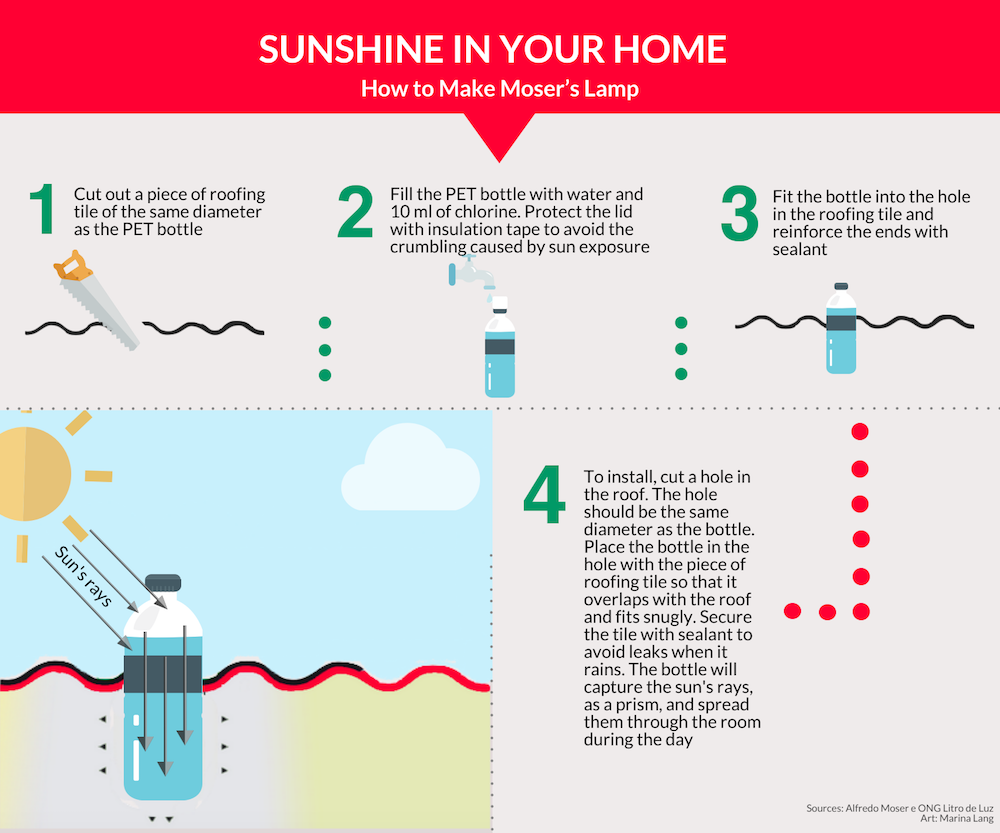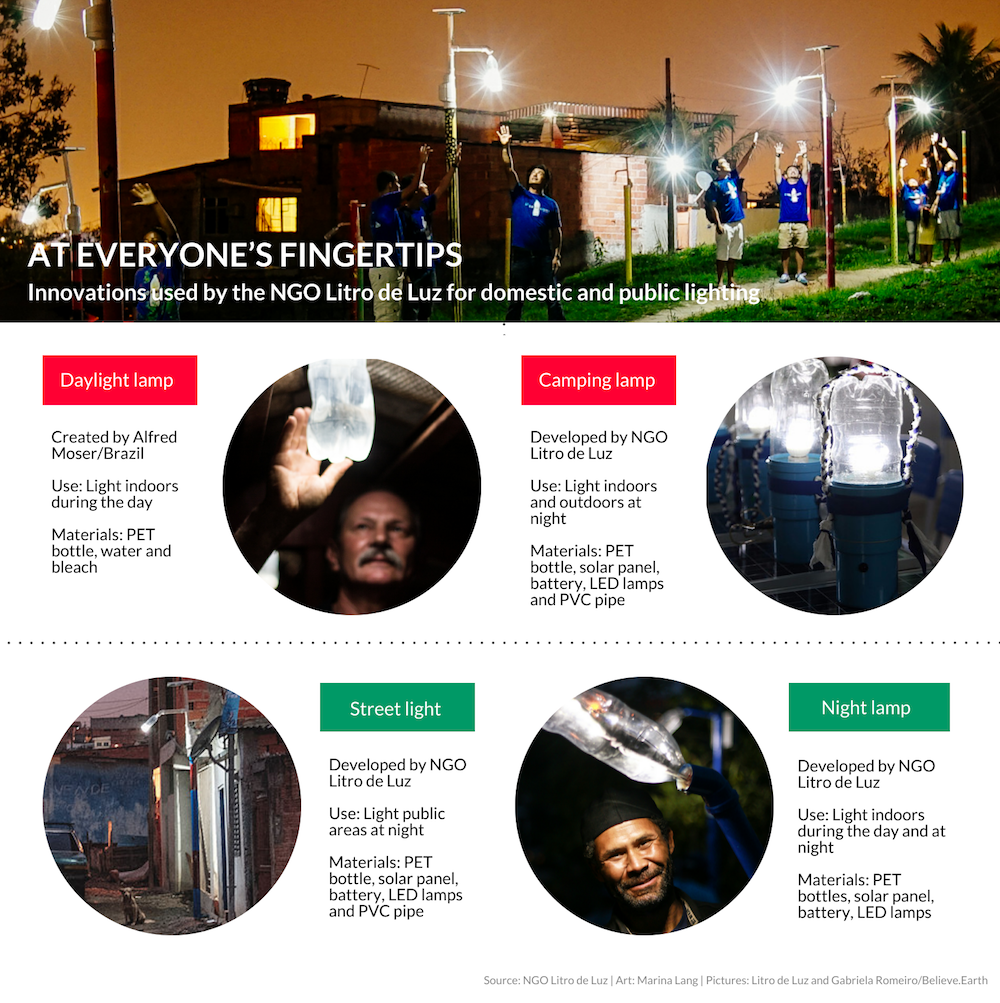Cheap, recyclable, and free of carbon emissions, the PET bottle lamp was invented by the Brazilian mechanic Alfredo Moser in 2001 and has been distributed by the international NGO Litro de Luz (Litre of Light) to over 1 million installations in more than 20 countries. The organization has worked in Brazil since 2014, and has already provided lighting to approximately 11,000 people throughout the country – a step forward in a land where 2.7 million people still live without electricity, according to data from the last demographic census by the Brazilian Geographical and Statistical Institute (IBGE).
Moser’s lamp has no environmental impact, which makes it a solution aligned with the United Nations’ 17 Sustainable Development Goals (SDG). The SDG are practices intended to guide national and international policies of UN member states, ranging from the eradication of poverty to gender equality to the sustainable use of natural resources. According to the NGO Building and Social Housing Foundation, each daytime PET lamp prevents the emission of 200 kilos of carbon gas per year, while a nighttime one, inspired by the Brazilian mechanic’s idea, saves the atmosphere from the emission of 350 kilos of pollution per year. In 12 months, the two can keep 209, 800 tons of carbon gas from being emitted.
Another advantage of the bottle lamps is that, in addition to substituting for electric lighting, they also take the place of kerosene lamps, which are still frequently used in places with no access to electricity and emit 270,000 tons of carbon a year, according to a study published in the scientific journal Environmental Science and Technology. Not to mention the money saved: a study released last year by the International Solid Waste Forum analyzed the installation of 336 Moser lamps in an industrial warehouse in the Brazilian state of Rio Grande do Sul and noticed a 40.8 percent reduction in energy consumption.

Moser shows a bottle inserted into a roof tile: the sun’s rays shine through the water and light the space (Gabriela Romeiro/ Believe.Earth)
HOW TO BUILD A PET BOTTLE LAMP
A Moser lamp has a low cost, since the building material consists of a 600ml PET bottle (for the equivalent of 40 watts) or a 2 litre bottle (for the equivalent of 60 watts), water and 10ml of chlorine, in addition to a few materials required to seal the cap and the space around the bottle on the roof. It has an average service life of 5 years.
The installation is also simple, but the original version can only be installed in houses without lining or insulation in the roof – a common feature of modest houses without electricity.

The lamp invented by Moser only works during the day, since it reflects and diffuses sunlight into the interior space. The Litro de Luz organization, however, found a way to get around this limitation. “The only possible way was to store solar energy to use at night,” says Rodrigo Silveira, the NGO’s director of technology. “This was done by developing a system composed of four parts: a solar panel, to capture energy from the sun; a battery, to store the energy; a set of LED lamps inside a PET bottle; and the control circuit that allows it to function automatically when it starts to get dark.”
Today, the two most commonly used of the organization’s lighting solutions in Brazil are street lamps for public spaces, and the standing lamp, which can be carried. Litro de Luz studies the location of the installation, guides its maintenance, and offers training on how to use the equipment. Access to the technology is restricted because, according to the organization, they must assure the quality standards in the project’s execution. But the really essential aspect is the social empowerment of the communities in which the systems are installed.






